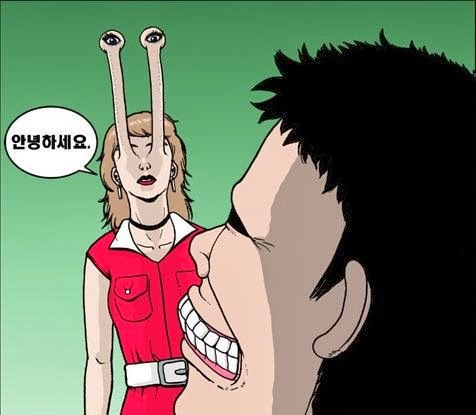남자친구는 아니고 '썸남'이 있어 / He's not my boyfriend, he's just my 'something'.
썸 is a Korean slang word that is borrowed from the English word, "something." It describes a relationship where the couple is dating, but not officially together yet. Often it is used when two people are interested in one another and spend time together, but haven't made any official steps toward becoming an official couple.
썸은 영어의 'something'에서 따 온 신조어입니다. 이 단어는 남녀가 데이트하지만 공식적으로 사귀기 전 단계를 나타냅니다. 즉, 남녀가 서로에게 호감이 있고 시간을 같이 보내지만 사귀는 단계는 아닐 때 쓰입니다.
썸남 means your "something" is a man and, 썸녀 means your "something" is a woman.
썸남은 상대방이 남자일 때, 썸녀는 상대방이 여자일 때를 의미합니다.
어휘 Vocabulary:
- 혹시 perchance, just wondering if maybe
- 썸남 just a guy I'm seeing
- 눈치 a sense for what's going on with others
- 소개팅 a blind date (usually set up via mutual friends or family)
- 호감형 pleasant (type)
- 성격 personality
- 썸(을) 타다 to see someone / go on a casual date with
- 외롭다 to be lonely
- 친구들(을) 데리고 가다/오다 to bring your friends along (somewhere)
- 이따 later on today
- 카톡하다 to message someone on Kakao Talk chatting app
대화 Dialogue:
가: 혹시 너 남자 친구 생겼어?
나: 남자 친구는 아니고 썸남은 있어. 너 눈치 진짜 빠르다.
가: 어. 나 한 눈치 하잖아. 어떻게 만났어?
나: 응, 너 하진이 알지? 걔가 지난 주말에 소개팅 해줬어.
가: 뭐 하는 사람이야?
나: 나이는 28살이고, 키는 180에, 얼굴도 호감형이야. 성격도 좋은 거 같아.
가: 아 잘됐으면 좋겠다. 나는 요즘 썸 타는 사람도 없고 외로워.
나: 아 그래? 나 이번 주에 썸남 만나는데 친구들도 데리고 나오라고 할게. 같이 놀자.
가: 나야 고맙지. 그럼 이따 물어보고 카톡해~
'썸'is also a popular theme in K-pop songs:
(English lyrics available within YouTube) 썸남썸녀 English lyrics















